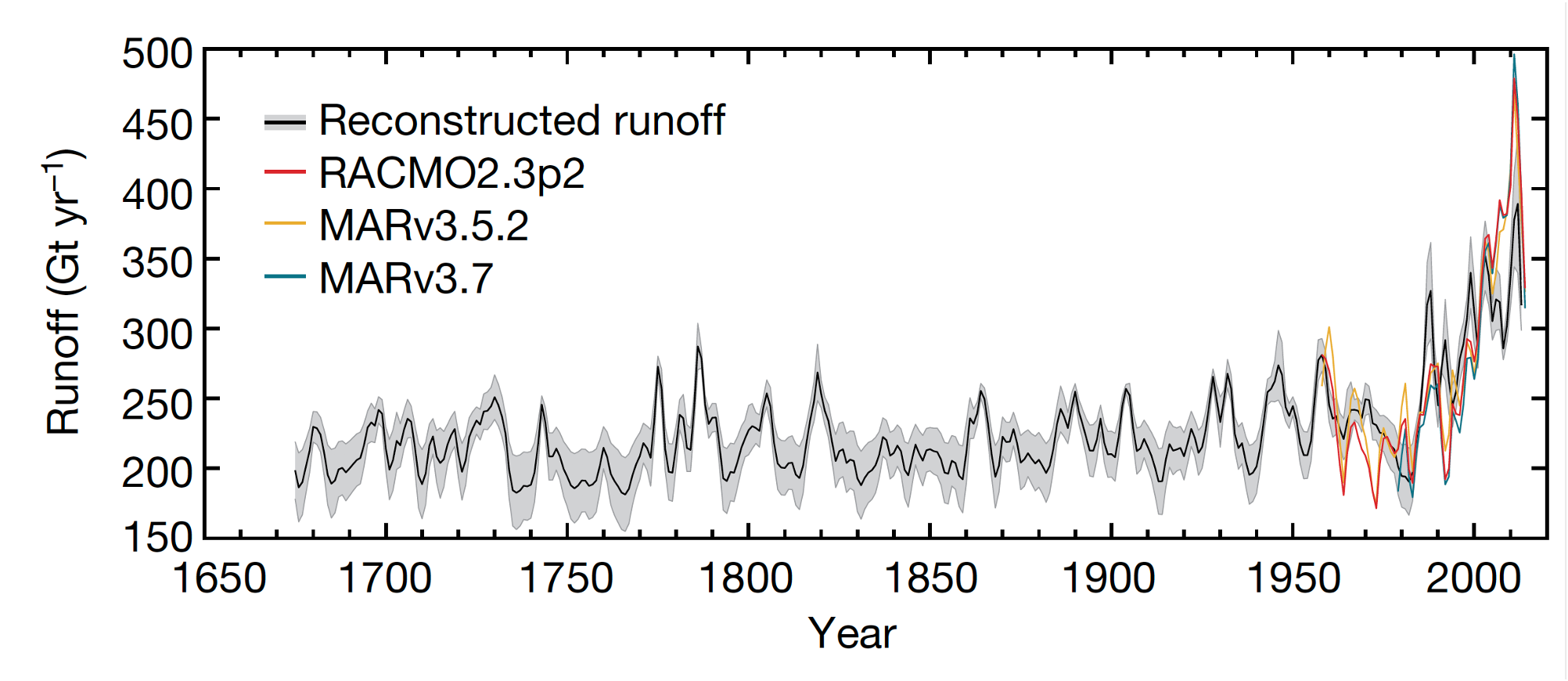Snow and ice
How sensitive are glaciers and ice caps to climate?
Coastal west Greenland ice cap mass balance
Ice cores provide high resolution insights into past climatic conditions, making them uniquely well-suited for reconstructing rapid climate change at high latitudes. Despite this, few records currently exist from coastal Greenlandic ice caps due to their remote nature, limiting our long-term understanding of past maritime and coastal climate variability across the Arctic. Together with colleagues at the Woods Hole Oceanographic Institution, University of Washington, and the Desert Research Institute, we have extracted and developed the first Common Era-length ice core climate record from the western Greenland seaboard.

Past meltwater from the Greenland Ice Sheet
Surface meltwater runoff is currently the leading source of Greenland Ice Sheet mass loss, but is poorly constrained prior to the ~1950’s. In a study led by Luke Trusel (Penn State University), we pioneered the use of surface snow-melt histories – as recorded across a suite of carefully targeted coastal Greenlandic ice core records – to quantify past surface meltwater intensity and runoff changes across the Greenland Ice Sheet.
This work featured two primary, and unambiguous, results:
- Greenland melt and runoff has increased steadily since the mid-18th century, coinciding closely with the onset of post-industrial Arctic warming;
- Over the last few decades, Greenland runoff surpassed the range of natural variability. Current levels of Greenland melt and runoff are unprecedented over at least the last three- to four-hundred years.
Furthermore, our results demonstrate that further warming across Greenland will result in accelerated contributions to global sea-level rise, due to a nonlinear sensitivity in Greenland melting to atmospheric temperature.
You can read more about this high-profile work here, here, and here.

Arctic sea ice reconstruction
An ongoing interest is the reconstruction of Arctic sea ice variability. This is an extremely challenging problem, for which little knowledge exists prior to ca. 20th century observations.
Recent work by Ali Criscitiello (Canadian Ice Core Laboratory, U. Alberta), recently published in JGR Oceans, is pioneering the use of ice core geochemical records to understand Canadian Arctic polynya variability.
References
- Criscitiello et al.: Marine aerosol records of Arctic sea-ice and polynya variability from new Ellesmere and Devon Island firn cores. JGR Oceans, 126, e2021JC017205, 2021.
- Osman, M. et al.: Enhanced sensitivity of west Greenland ice caps to last millennium climate change. Nature Geoscience, 14, 756–761, 2021.
- Trusel, L. D., Das, S. B., Osman, M., et al.: Nonlinear rise in Greenland runoff in response to post-industrial Arctic Warming, Nature, 564, 104–108, 2018.